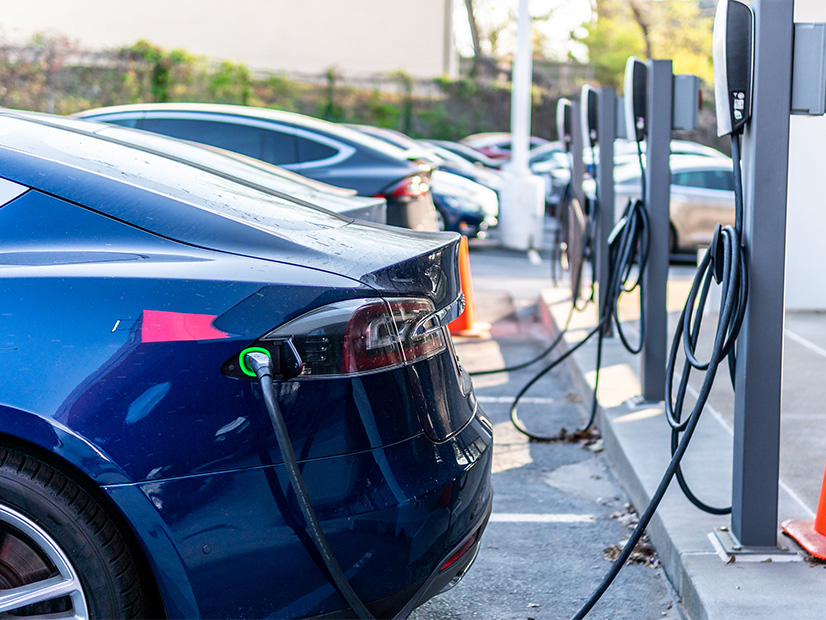The North Carolina Utilities Commission on Tuesday approved a new tariff that will allow Duke Energy to rent charging infrastructure to customers.
Under the Electric Vehicle Supply Equipment (EVSE) tariff, Duke will install Level 2 EV chargers and charging infrastructure for residential and non-residential customers, and fast-charging systems for non-residential customers on its system. The utility will offer five options for both Level 2 chargers and fast chargers.
Customers at both levels will be charged only for Duke’s investments on their side of the meter with contracts ranging from three to seven years.
NCUC’s Public Staff and third-party firms who offer EV charging infrastructure on a competitive basis questioned whether Duke’s tariff overstepped its monopoly franchise and might chill investments from other parties in its territory.
ChargePoint noted that the private sector already offers similar programs where customers can get EV chargers installed without buying the equipment.
“The private sector offers many different business models and products to provide turnkey solutions for site hosts, coordinating all aspects of the charging experience from installation to operation and maintenance, including solutions for site hosts that are not seeking to own or operate their own charging equipment,” ChargePoint told the regulator.
Duke noted that its EVSE tariff will be completely paid for by participants in the program, not all ratepayers. The charging hardware and networks will come from existing and future market participants, removing barriers to EV adoption and allowing customers to choose from multiple vendors.
Issues around competition for charging infrastructure came up when earlier pilot-scale programs were before the NCUC, and it did not close the door on Duke participating in the mature market. For example, last year it approved a “make ready credit” where Duke pays customers a credit based on increased revenues from the next three to five years of EV ownership so they can defray the cost of wiring and other improvements needed to install chargers.
“The commission concludes that there is a proper role in serving the public convenience and necessity for Duke’s involvement in offering a voluntary tariff for ratepayers who want the option of leasing EV equipment and leaving the maintenance of such equipment to Duke,” the order said.
Limited involvement from Duke’s utilities will be beneficial in gauging public interest in more charging options, as well as obtaining data on charging practices and alternative rate structures.
“The commission’s challenge is to allow the availability of such options for ratepayers while balancing the need to avoid dampening the competitive market,” the order said.
The previous programs authorized for Duke were temporary and the NCUC said it will review the EVSE in three years to determine if it should be continued, amended or discontinued.
While the question of whether Duke will continue offering actual charging equipment will be revisited, the utility is planning for an increase in load as more customers buy plug-in cars, its Managing Director of Grid Systems Integration Jay Oliver told the state’s Energy Policy Council’s Energy Innovation Committee at a meeting Thursday. The council is run out of the Department of Environmental Quality and advises the legislature and governor on energy policies.
The firm’s next integrated resource plan will include load growth from EV adoption, which can be handled easily by Duke’s generation and transmission system. The key to avoiding any issues is load management, which Duke has plenty of experience with.
“What we’ve learned is that simple load management programs for vehicle charging work very well,” said Oliver.
Without any price signals to the contrary, customers tend to charge their vehicles in the late afternoon and early evening, which works in the winter, but coincides with the peak demand hours during the summer, said Oliver. Simple load management programs can shift that charging to 9 p.m. and later.
Load management also can help address charging demand at public sites like offices where customers would plug in during the morning, which presents issues in the winter when demand is high earlier in the day, said Oliver.
The new demand from EVs is going to require some upgrades to the distribution system, where a typical transformer serves five to eight customers.
“When you add a Level 2 charger to your home, essentially, you have just doubled the demand that that home could draw,” Oliver said.
Level 2 chargers operate at 240 volts and typically take about two hours a day to charge a vehicle’s battery, which means Duke can shift the charging times around to avoid overburdening its distribution circuits and minimizing the amount of upgrades it will need to make to accommodate new demand from vehicles.
Public chargers are going to have less flexible demand as they will be used whenever consumers show up and plug in their vehicles, said Oliver. North Carolina alone should have 140 to 200 sites planned by its Department of Transportation, said Oliver. Those are going to require more transformers to support, and it can take utilities 12 to 18 months to procure those now.
Fast-charging sites do not take up much physical space, but their effects on the power system are much greater.
“But from an electrical load perspective, think about a Harris Teeter, or maybe even a Walmart,” Oliver said. “That’s what the load of these things are.”
Electrification makes sense for many fleets of vehicles such as those operated by shipping firms or Amazon, but one issue is that fleets often park close to each other. So, when firms start to adopt EVs for the fleets, that could require even bigger upgrades such as new substations, Oliver said.
“We’re having to get, we believe, three to five years in advance to serve these locations appropriately,” he added. “And we’re working on all of that now — putting capacity projects into place so we can actually go and do those upgrades ahead of time so we’re there when the demand comes.”


